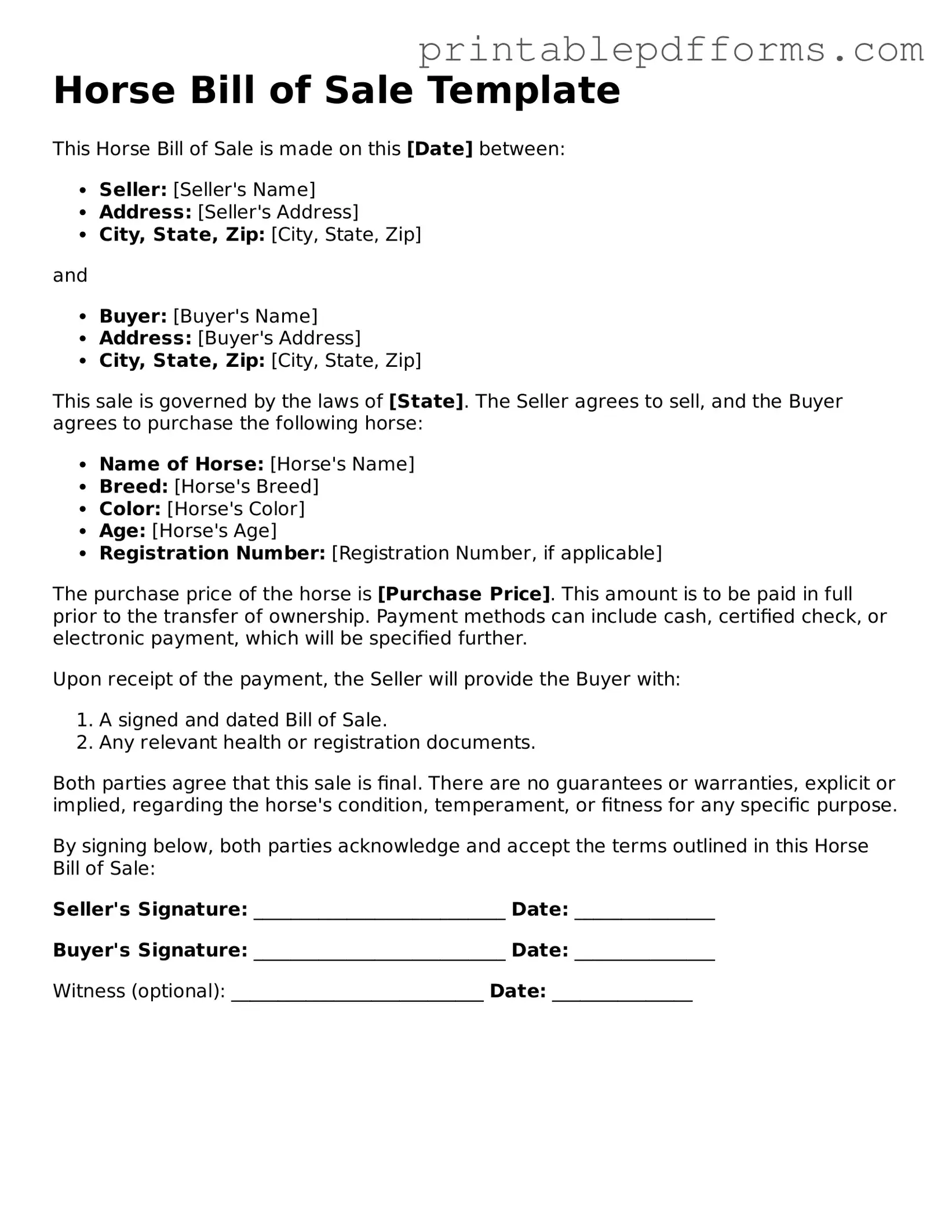Horse Bill of Sale Template
This Horse Bill of Sale is made on this [Date] between:
- Seller: [Seller's Name]
- Address: [Seller's Address]
- City, State, Zip: [City, State, Zip]
and
- Buyer: [Buyer's Name]
- Address: [Buyer's Address]
- City, State, Zip: [City, State, Zip]
This sale is governed by the laws of [State]. The Seller agrees to sell, and the Buyer agrees to purchase the following horse:
- Name of Horse: [Horse's Name]
- Breed: [Horse's Breed]
- Color: [Horse's Color]
- Age: [Horse's Age]
- Registration Number: [Registration Number, if applicable]
The purchase price of the horse is [Purchase Price]. This amount is to be paid in full prior to the transfer of ownership. Payment methods can include cash, certified check, or electronic payment, which will be specified further.
Upon receipt of the payment, the Seller will provide the Buyer with:
- A signed and dated Bill of Sale.
- Any relevant health or registration documents.
Both parties agree that this sale is final. There are no guarantees or warranties, explicit or implied, regarding the horse's condition, temperament, or fitness for any specific purpose.
By signing below, both parties acknowledge and accept the terms outlined in this Horse Bill of Sale:
Seller's Signature: ___________________________ Date: _______________
Buyer's Signature: ___________________________ Date: _______________
Witness (optional): ___________________________ Date: _______________
